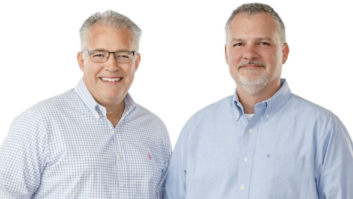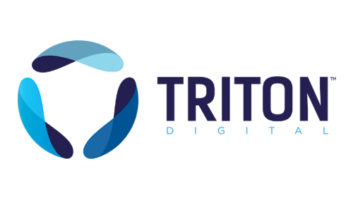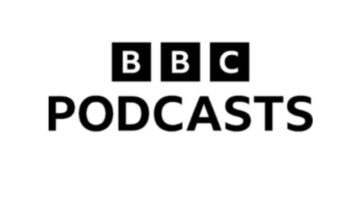Public Stations, Networks Dive Into Podcasting Before They Know Whether It Will Pay Off
The explosive rise of podcasting from experimental technology to mainstream distribution platform in less than two years has made broadcasters take notice, if for no other reason than to see what the fuss is about.
Equal parts convenience and content, with a fair measure of hype, podcasting gives listeners the ability to access a global cache of portable, relevant content that can be used whenever and wherever they want it.
It is this balance of simplicity, choice and control that gives podcasting its appeal to listeners, experts believe; and these attributes mark the arrival of what many see as the first truly widespread on-demand distribution model, a disruptive technology that has the potential to reshape the business of broadcasting.
Recognizing both the competitive challenges and service opportunities represented by on-demand, public broadcasters have been quick to begin experimenting with podcast distribution of their on-air programming.
KCRW dives in
Iconic Los Angeles public radio station KCRW(FM), known among pubcasters for its eclectic format, loyal listeners and independence, began podcasting a significant amount of its programming in February. “We needed to do everything that was feasible to do,” said General Manager Ruth Seymour.
Since that early foray, KCRW has hardly let up. Apple CEO Steve Jobs featured KCRW’s podcast of the station’s pop culture interview show “The Treatment” when he demonstrated the newly-added podcasting support of his company’s iTunes software in June. “We had 100,000 downloads in the first day after the announcement,” Seymour recalls.
KCRW has continued to add podcasts, now offering more than 20 programs. “When we started streaming 10 years ago, we had three streams, not just one,” Seymour says. “We said, ‘Let’s do online what we can’t do on the air.’ It’s the same with podcasting.”
Program producer and network National Public Radio in August launched a podcasting service in partnership with WNYC(AM/FM), WGBH(FM), Boston; KQED(FM), San Francisco; KUT(FM) Austin, Texas and WXPN(FM), Philadelphia. Other partners include Northwest Public Radio, Great Lakes Radio Consortium, Public Radio International and American Public Media.
The NPR Podcast Directory automatically gathers programs from a number of public radio stations, networks and NPR itself, which are combined with podcast-specific underwriting and then distributed from NPR’s servers to end users for free via station and NPR Web sites, iTunes and other podcast directories.
“It’s going spectacularly well,” says Ken Stern, executive vice president of NPR. “We’ve served millions of podcasts since the directory launched, we were able to bring in Acura as a major sponsor, and we’re managing costs with a sense of scale that hasn’t been seen (in public radio) before.”
The costs for developing and operating the service have been borne by NPR, but have not been published. Station partners are responsible for covering production costs for any podcasts they feed to the service. For stations that are already using computer-based production and playout systems, re-purposing an existing program for podcasting adds little incremental cost to production, according to those interviewed for this article.
Stern attributes the success of the effort in large part to the unique partnership. “This really came from the stations,” he said, referring to a small coalition of public radio stations that approached NPR in July to propose a joint project to explore the opportunities and challenges of on-demand distribution. “I hope it becomes a model for future projects.”
Dennis Haarsager, associate vice president and general manager for Educational Telecommunications and Technology at Washington State University, chairs the Public Service Publisher Initiative working group, a group of broadcast and technology industry professionals who are working to establish a digital distribution service for public service programming.
‘On-demand decade’
As a vocal advocate for the adoption of on-demand technologies by public broadcasters, Haarsager is gratified to see the rapid development of high-profile podcasting efforts from player like KCRW and NPR.
“There is a greater consensus than there was a year ago that on-demand is an important place to be investing,” Haarsager said, citing as one example a recent speech by British Broadcasting Corp. Director-General Mark Thompson, who declared, “This decade will be the decade of on-demand” and pledged significant resources to make all BBC content available online to users in the U.K.
Similarly, Haarsager observes that U.S. public broadcasters “may be able to be in a leadership role here” in part because local public stations produce hours of original programming each week, and they own the rights (or can obtain them) for much of that content.
But, he cautions, public broadcasters will have to make some changes. “On-demand is definitely a disruption to the aggregators, both networks and local stations as retailers of national content. We’re definitely going to have to look at our business.”
Stern echoes this uncertainty, but believes that NPR and its member stations are positioned to take on the challenge.
“On-demand audio complements the live broadcasts” of local stations, he said. “It allows people to use the content when and where it works for them. The challenge now is to build a model that not only serves people, but creates value.”
Seymour agrees that on-air and on-demand services are complementary, but cautions that the options for building a viable business model for public on-demand will be constrained by the expectations of the audience.
“The culture of online is free,” Seymour said, saying that subscription-based services on the Internet have not been less successful. “There are other ways to make money; our strategy is to make everything available to everyone.”
NPR’s podcast directory ( www.npr.org/rss, and click on “NPR Podcasts”) offers selections from marquee programs by the network and its partners.
However, Seymour recognizes that there should be limits to what content is available for podcasting. “I like what NPR has done with their podcasts,” offering genre-based digests of segments from multiple programs, “but I don’t want to see NPR podcasting ‘All Thing Considered’ or ‘Morning Edition.’ We (stations) pay for those programs, promote them, develop them.”
Stations have been wary of NPR’s efforts to distribute content directly to listeners in the past, especially since the arrival of satellite radio. NPR programs two channels on Sirius Satellite Radio with a mix of NPR- and station-produced content.
Although most of the podcasting content available from public radio producers is culled from existing programs, Haarsager believes producers will begin to realize that “they need long-term archival value of their created content,” putting more resources into productions that will have continuing interest over a long period of time.
Seymour also sees the realities of worldwide distribution changing the nature of programming that was once only heard locally. “The Internet and podcasting is without geography and without time,” she observes, “and you may not realize how local you are until you start sending your programs out into the world.”
Organizing tools needed
Although she admits that it’s a challenge, Seymour recognizes an opportunity in producing for a worldwide market. “Public radio tends to talk to itself a lot,” she notes. “I want public broadcasting to reach outside the traditional audience.”
Stern sees a similar advantage to playing on a global stage. “I like to tell people that NPR is now the world’s largest podcaster. This has taught us that there is enormous interest in our content.” He also recognizes that the online community is a distinct audience. “There’s a community aspect of this; listeners have new ways to get involved and get content, and we have new ways to get feedback directly from the community.”
Haarsager believes that this unique style of online collaboration and communication will turn out to be one of the great strengths of on-demand technologies that use the Internet as a medium, if properly implemented.
“It’s essential to provide community tools to self-organize the content,” he said. “The more information you add, the more value it has.” Otherwise, users will become overwhelmed by the volume of content available, without any reasonable way to sort through it.
In the on-demand future, Haarsager said, “community-based organizing tools are the ‘secret sauce’ that makes it work.”
Pundits acknowledge skeptics who believe podcasting, much like streaming audio, could become dominated by a select few players in three to four years – but believe the skeptics are not looking ahead to the on-demand feature.












